Scientists are still assessing the impact of post-tropical storm Fiona on fossils and other cultural artifacts buried in the island’s coastline.
According to researchers from UPEI’s School of Climate Change and Adaptation, the massive storm in September 2022 washed away a record amount of coastline. In some places it was even one and a half to seven meters, compared to the usual annual average of 30 centimeters per year.
“From a fossil perspective, Fiona had quite an impact. It gives and it takes,” said John Calder, a paleontologist who works as a consultant for the provincial government.
One victim was a spot on the north coast of PEI where five very large boulders were covered with reptile tracks from 290 million years ago.
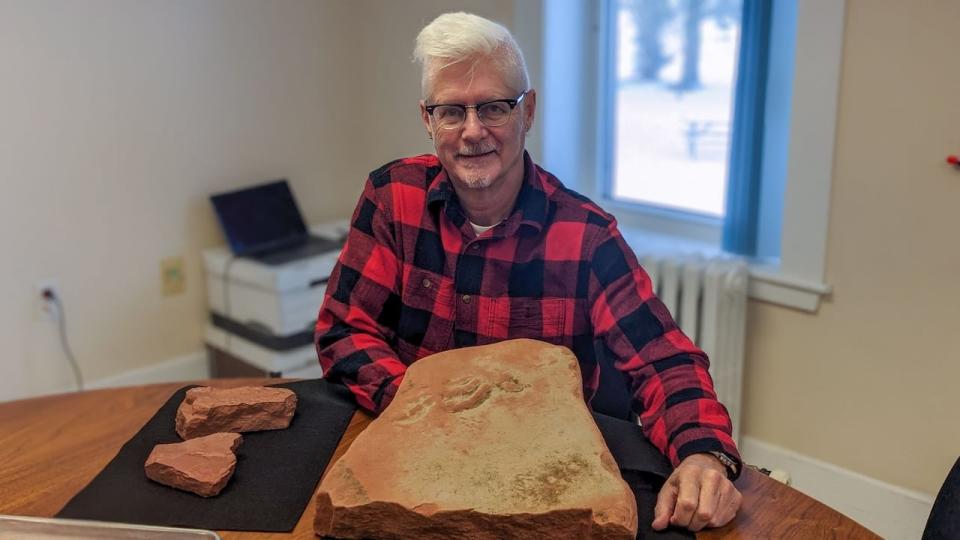

John Calder, a paleontologist who works as a consultant for the provincial government, says shoreline erosion has also had some benefits. (Shane Hennessey/CBC)
“It’s hard to imagine that the force of the ocean could have done that, but these things were at least a ton each and they were gone right after Fiona,” Calder said.
“It was just dismay. Because these were quite nice creatures, all on one surface. There was a very real story to be told.”
Calder said researchers were able to get good photos of the boulders between their discovery and the 2022 storm, but the artifacts themselves were lost forever.
Glimpses of the past
At the same time, Calder said coastline erosion has also had some benefits.
“Coastal erosion, the bane of all who live near the coast, actually continues to reveal more and more glimpses of Prince Edward Island’s prehistoric past,” he said. “An incredible record has been created, especially since Fiona.”
Calder said PEI is becoming a hotspot for paleontology, partly because of recent discoveries from the early Permian period, before the age of the dinosaurs.
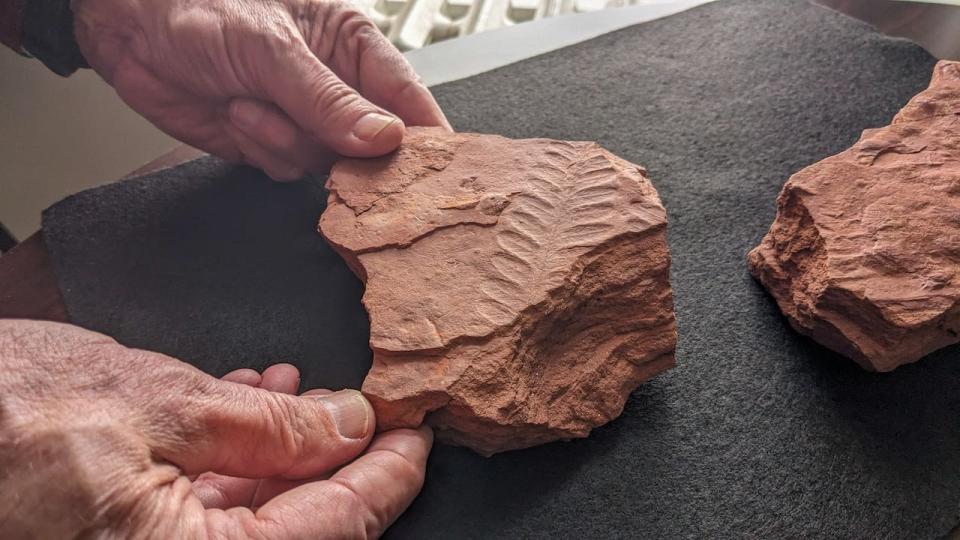

John Calder holds a fossilized fern discovered on Prince Edward Island. (Shane Hennessey/CBC)
Calder said coastal erosion also means it is important to continually monitor changes along the island’s coastline.
‘Sometimes a continuous trail of footprints is collected going into the cliffs. Then a year or two, five years later, if we continue to monitor that site, we will find more examples of the creature’s trail extending far into the cliffs. ..
An incredible record has been created.
– John Calder, paleontologist
“Coastal erosion is yielding more and more fossil treasures around PEI, and it is important to always be vigilant and monitor.”
Calder said there are only a few trained paleontologists on the island, so it’s important for what the field calls citizen scientists to keep an eye on the coastline as erosion continues, “to be alert, especially if you’re on the cliffs and runs along the coast.
“Keep your eyes open and if you see anything different, bring them to the attention of the PEI government. And I will be contacted to see if this could possibly be a fossil.”
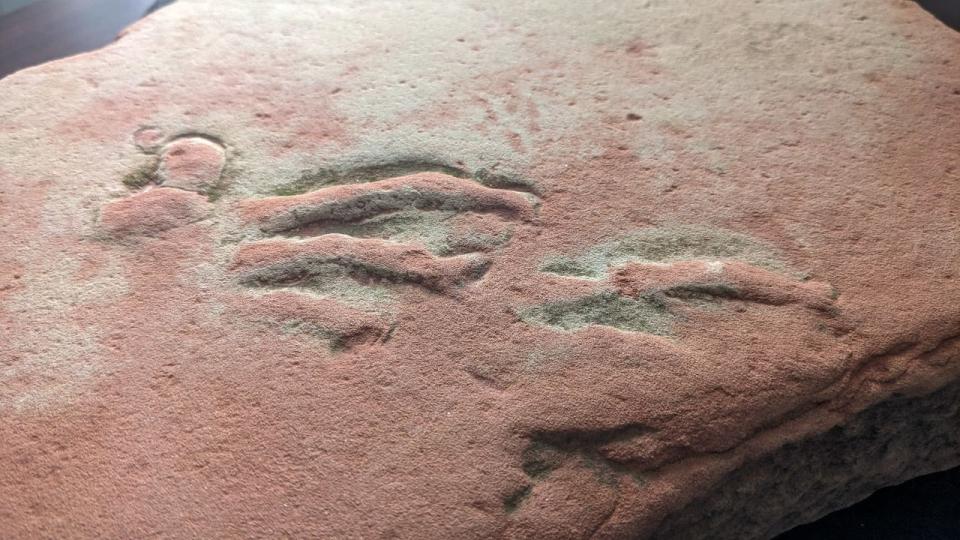

This fossil was discovered along the shores of Hillsborough Bay in late 2023. (Shane Hennessey/CBC)
Calder cited the summer 2022 discovery of a completely fossilized skeleton of a prehistoric animal from about 290 million years ago as a situation in which scientists needed to respond quickly before the fossil washed away.
It was a local teacher who noticed it in Cap Egmont and reported it.
“Every tide that came in covered it and washed bits away,” Calder said.
“From the time she found it to the time we picked it up it was only a few days, but it wouldn’t have been here for another week or two. It was just a short window of opportunity.”
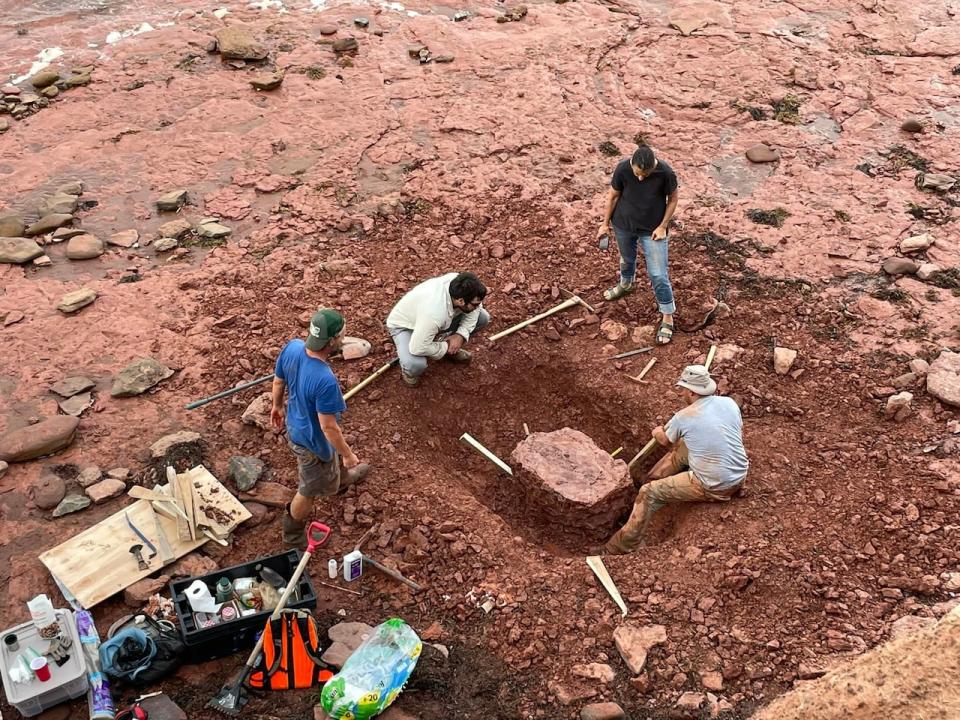

Another view of the large fossil that will be recovered from Cap Egmont in the summer of 2022. (Submitted by John Calder)
‘Do not disturb’
Provincial archaeologist Christian Thériault agrees that coastal erosion is a major concern when it comes to preserving traces of the island’s heritage.
“Fiona had a pretty big impact,” Thériault said. “Walking around the island, I could see many known and unknown locations that had been severely disrupted by the storm, which risked losing a lot of knowledge if we didn’t try to protect it.”
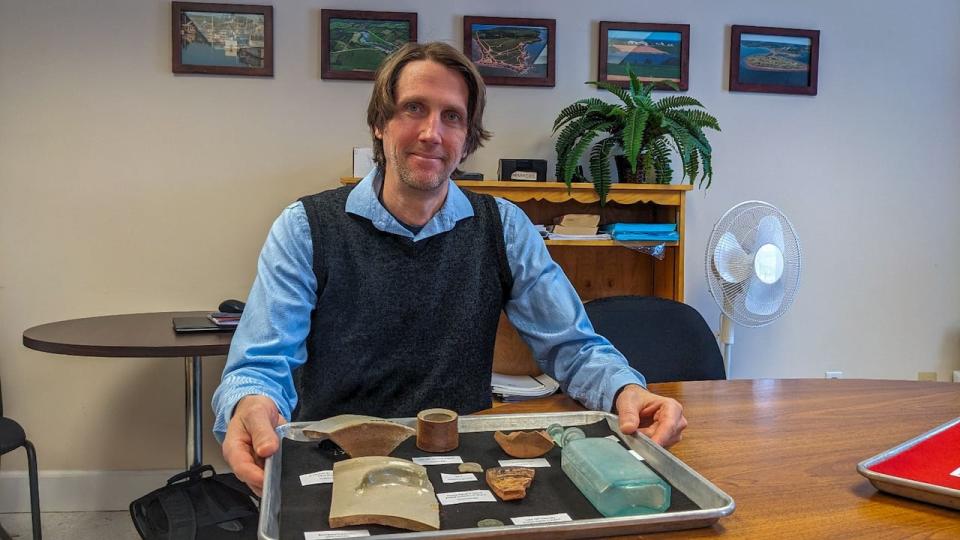

Provincial archaeologist Christian Thériault says coastal erosion is a major concern for the work he and his staff do in an effort to preserve the island’s cultural heritage. (Shane Hennessey/CBC)
With rising sea levels, he says, “The island is slowly disappearing. Much of this cultural and geological heritage is therefore constantly disappearing.
“Our job is to try to identify it and protect it what we can, and maybe get it out of the ground before it disappears.”
Thériault said he wants islanders to contact his department if they find anything that could be a cultural artifact or a fossilized echo of a previous life form.
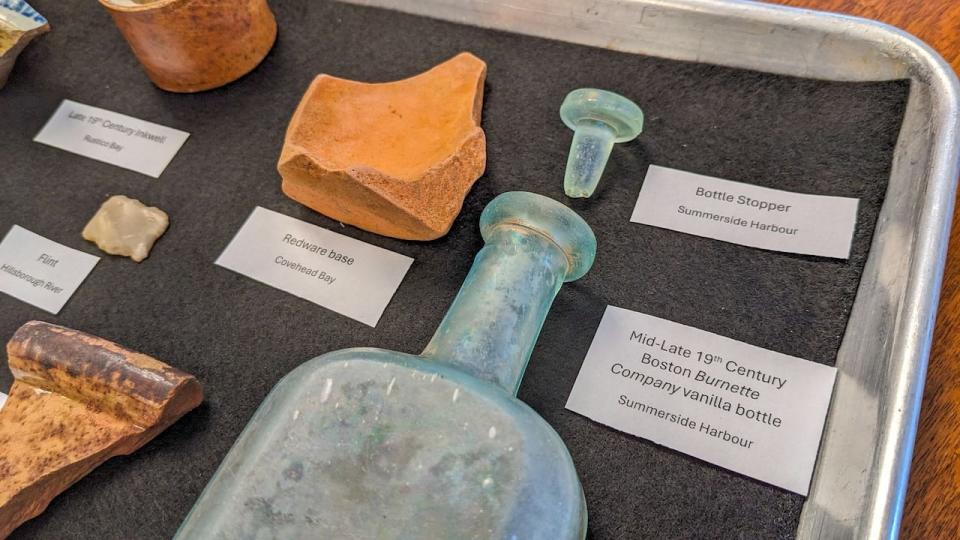

Some artifacts preserved by PEI’s Department of Archeology. (Shane Hennessey/CBC)
“After a big storm like Fiona’s, a lot of people contacted us because everything came to light all over the island,” he said. ‘The most important thing is not to disturb you [it]. Just let us know where it is and what they found so we can investigate.”
Thériault’s advice:
-
Take a photo of the object and place it next to an object, such as a coin, to get an idea of its size.
-
Document the exact location of the object, for example by placing a pin on your phone’s map app.
-
Contact the provincial archaeologist by email at archaeology@gov.pe.ca.